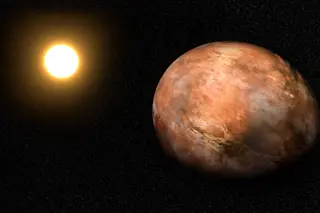If mission specialist Michael Massimino is worried about performing death-defying repairs on the world’s most famous (and expensive) telescope, he does a convincing job of hiding it. Snug in the electric-orange space suit that he will wear aboard the space shuttle Atlantis, he riffs genially about his Brooklyn upbringing, the search for a great slice of New York pizza, and the absurdities of NASA lingo. He discusses some technical issues about the suit with his crewmates. He reflects on the history around him in this corner of Houston’s Johnson Space Center, where Apollo communications equipment was tested four decades ago. In short, he exudes effortless competence and exactly zero fear.
Massimino will need that moxie and know-how when he and his crew blast off this month from Cape Canaveral and rendezvous with the Hubble Space Telescope 360 miles above Earth’s surface. Once the astronauts secure the orbiting 12-ton observatory to ...














